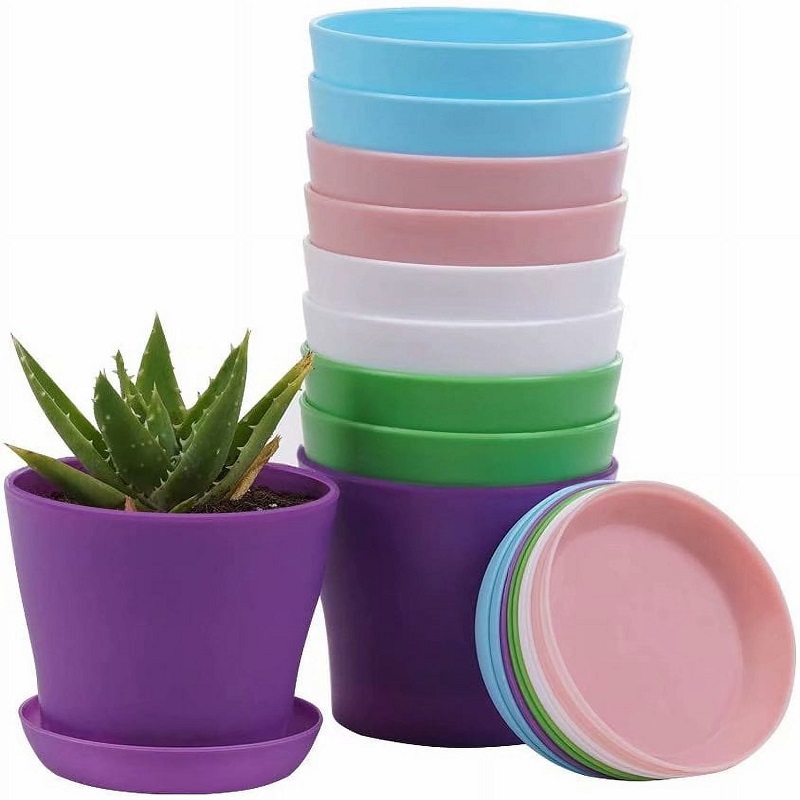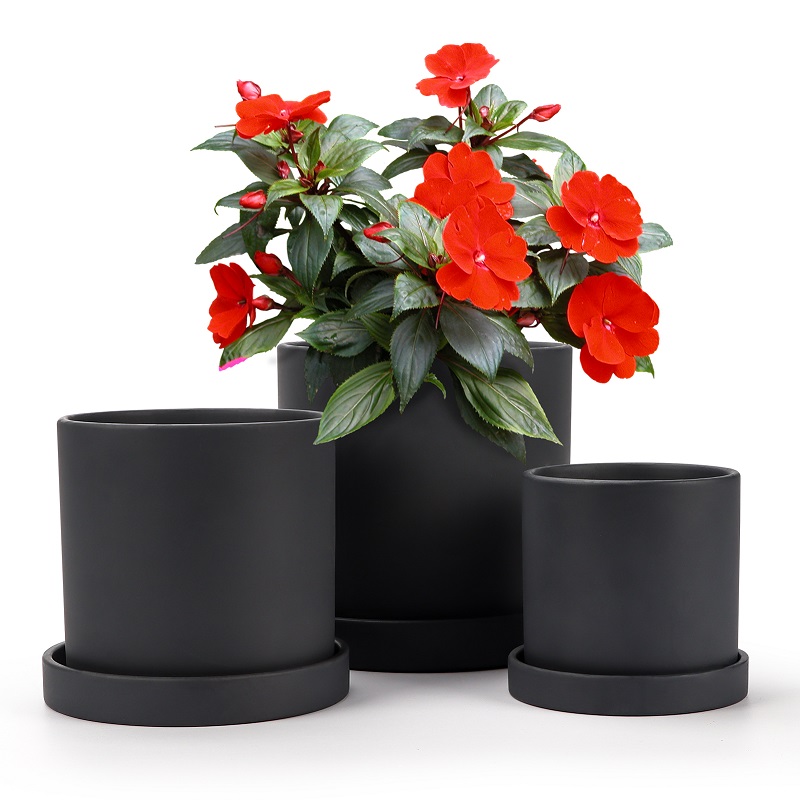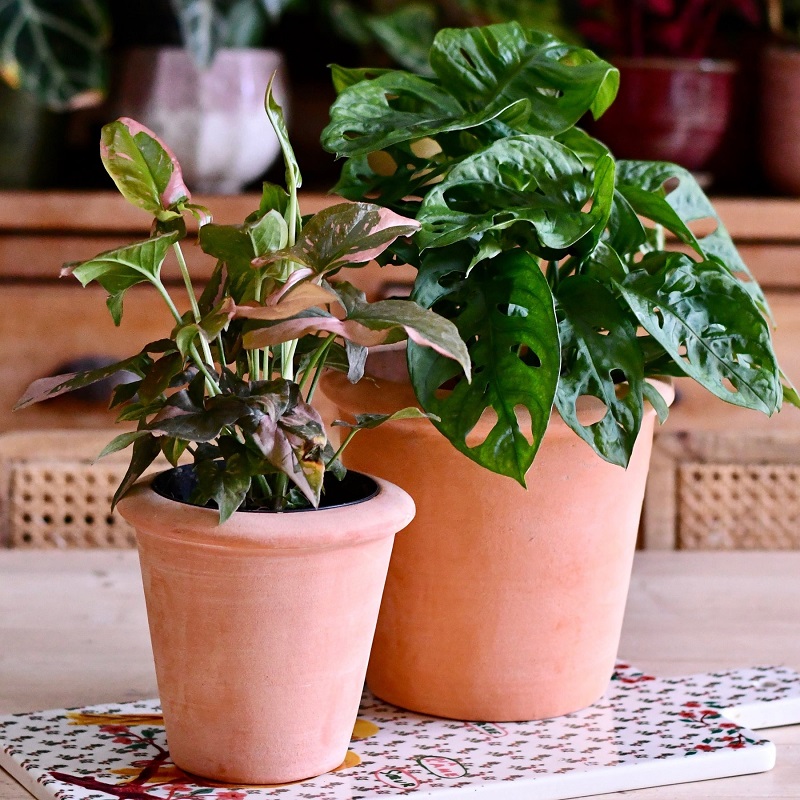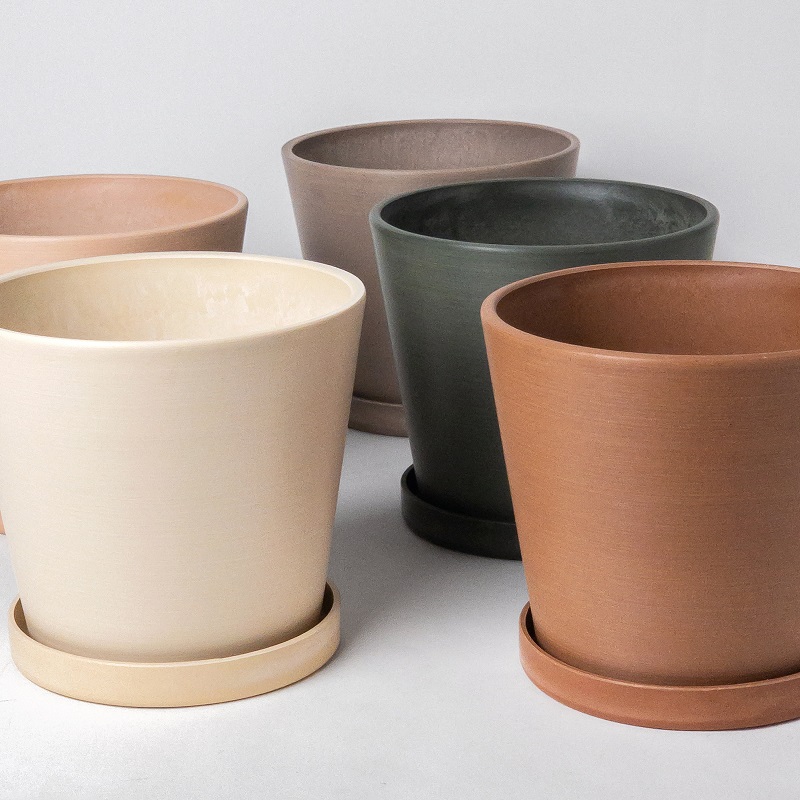Flower pots are essential for gardening, whether you’re cultivating vibrant blooms or growing herbs and vegetables. A crucial aspect of pot selection and maintenance is whether or not the pots have drainage holes. This article will explore why drainage holes are important, the potential problems of pots without them, and tips on managing plant health regardless of your pot’s design.
The Importance of Drainage Holes in Flower Pots
Why Drainage is Crucial for Plant Health
Drainage holes in flower pots are not just a feature; they are vital for the health and growth of plants. These holes allow excess water to escape from the bottom of the pot, preventing water from pooling around the plant’s roots. Standing water can lead to root rot, a serious condition where the plant’s roots begin to decay due to excessive moisture. Root rot can be fatal to plants, causing them to wilt and die despite regular watering and care.
Proper drainage ensures that the soil remains moist but not soggy. This balance is essential because different plants have varying water needs. For instance, succulents and cacti thrive in drier conditions and require well-draining soil to prevent root rot, while tropical plants might need consistently moist soil. Drainage holes help maintain the right soil moisture level, adapting to the needs of different plant species.

How Drainage Holes Prevent Overwatering
One of the main benefits of drainage holes is their role in preventing overwatering. Overwatering is a common mistake among gardeners, often leading to waterlogged soil. This condition reduces the amount of oxygen available to the plant’s roots, impairing their ability to absorb nutrients and water effectively. Drainage holes allow excess water to exit the pot, reducing the risk of overwatering and ensuring that the roots receive adequate oxygen.
In addition to preventing root rot, effective drainage promotes healthier root development. Roots that are not sitting in stagnant water are more likely to grow vigorously and spread out, enhancing the plant’s overall health and stability. Therefore, if you want to maintain healthy plants, it’s crucial to choose pots with adequate drainage.
Potential Problems with Pots Without Drainage Holes
Risks of Root Rot and Mold
Pots without drainage holes can pose significant risks to plant health. When water cannot escape, it accumulates at the bottom of the pot, creating a damp environment that encourages the growth of harmful fungi and bacteria. This excess moisture can lead to root rot, as previously mentioned, and also promote the development of mold and mildew on the soil surface and around the plant base.
Root rot manifests as mushy, discolored roots and a generally unhealthy plant appearance. It often starts slowly but can quickly become severe if the underlying issue of poor drainage is not addressed. To prevent such problems, it is essential to monitor soil moisture levels closely and consider using a moisture meter to gauge when your plants need water.
Challenges in Soil Management
Another challenge of using pots without drainage holes is managing soil moisture. Without proper drainage, it’s difficult to maintain the right soil consistency, leading to either overly dry or excessively wet conditions. This inconsistency can affect the plant’s ability to absorb nutrients and water, leading to poor growth and potential plant stress.
In addition, without drainage holes, any excess water added to the pot cannot escape, leading to waterlogging. Waterlogged soil is heavy and compacted, which can impede root growth and decrease aeration. To manage this issue, gardeners often need to be more vigilant about watering practices and may need to periodically refresh or replace the soil.
Alternatives and Solutions for Pots Without Drainage Holes
Adding Alternative Drainage Methods
If you have a pot without drainage holes, there are alternative methods to improve water management. One common solution is to use a layer of gravel or pebbles at the bottom of the pot. This layer creates a space where excess water can accumulate, preventing it from directly contacting the soil and roots. Although this doesn’t create true drainage, it helps reduce the risk of waterlogging.
Another option is to use a pot liner or mesh material that can help separate the soil from the base of the pot, allowing water to move away from the roots. Additionally, you can drill holes in the bottom of the pot yourself if the material allows it. For plastic and certain ceramic pots, drilling small holes can be a practical way to create drainage.

Choosing the Right Soil Mix
When using pots without drainage holes, selecting the right soil mix becomes even more critical. Opt for a well-draining potting mix that includes ingredients like perlite, sand, or vermiculite. These components help improve soil aeration and reduce the risk of waterlogging. Avoid using garden soil, as it tends to retain moisture and can lead to poor drainage conditions.
Regularly check the soil’s moisture level to ensure it is neither too dry nor too wet. Using a moisture meter can help you gauge the soil’s condition more accurately. Adjust your watering practices based on these readings to maintain an optimal environment for your plants.
Best Practices for Maintaining Plants in Non-Drainage Pots
Proper Watering Techniques
When dealing with pots that lack drainage holes, adjusting your watering technique is essential. Watering should be done carefully to avoid saturating the soil. It’s often better to water in smaller amounts more frequently, allowing the soil to dry out slightly between waterings. Check the top inch of soil before watering; if it feels dry, it’s time to water. If it still feels moist, hold off on watering.
Additionally, consider using a watering can with a fine spout to control the amount of water applied. This method helps prevent overwatering and reduces the risk of water pooling at the bottom of the pot. Always water directly onto the soil rather than from the side to ensure even distribution.
Regular Plant Care and Monitoring
Regular plant care is crucial for maintaining plant health, especially in pots without drainage holes. Monitor your plants for signs of stress or illness, such as wilting, yellowing leaves, or stunted growth. These signs can indicate issues with soil moisture or root health.
Also, periodically check the bottom of the pot for signs of mold or excess moisture. If you notice any issues, take corrective measures such as adjusting watering practices or improving the soil mix. Keeping a close eye on your plants and their environment will help you catch problems early and ensure their continued well-being.
Advantages of Pots with Drainage Holes
Enhanced Plant Growth and Health
Pots with drainage holes offer several advantages that contribute to better plant growth and health. The primary benefit is improved root aeration and reduced risk of root rot. As excess water can escape, the soil remains at an optimal moisture level, which is crucial for healthy root development.
Moreover, proper drainage helps prevent issues related to waterlogging, such as soil compaction and reduced oxygen availability. Plants in pots with drainage holes are more likely to thrive, exhibit robust growth, and show vibrant foliage. The ability to manage water more effectively also means less risk of fungal and bacterial diseases.
Easier Maintenance and Management
Pots with drainage holes are generally easier to maintain compared to those without. The effective water management reduces the need for frequent soil checks and adjustments. Gardeners can water their plants with more confidence, knowing that excess moisture will not lead to potential problems.
Additionally, pots with drainage holes often require less intervention to prevent common issues associated with poor drainage. They are also more forgiving if you occasionally overwater, as the excess water will simply drain away rather than accumulating in the soil.

Conclusion
In conclusion, drainage holes are an essential feature in flower pots that play a significant role in maintaining plant health. They prevent overwatering, reduce the risk of root rot, and ensure effective soil moisture management. While pots without drainage holes can still be used, they require more careful attention to watering practices and soil management.
Choosing the right pot for your plants involves considering whether you need drainage holes and understanding the alternatives if your pot lacks them. By implementing proper watering techniques and maintaining regular plant care, you can successfully grow healthy, vibrant plants regardless of the pot’s drainage features. Remember, the goal is to create a balanced environment where your plants can thrive and flourish.
